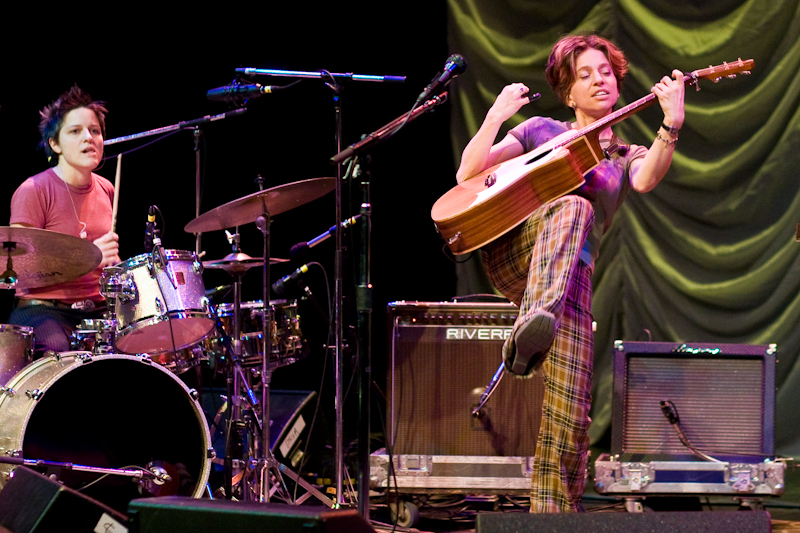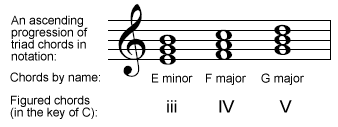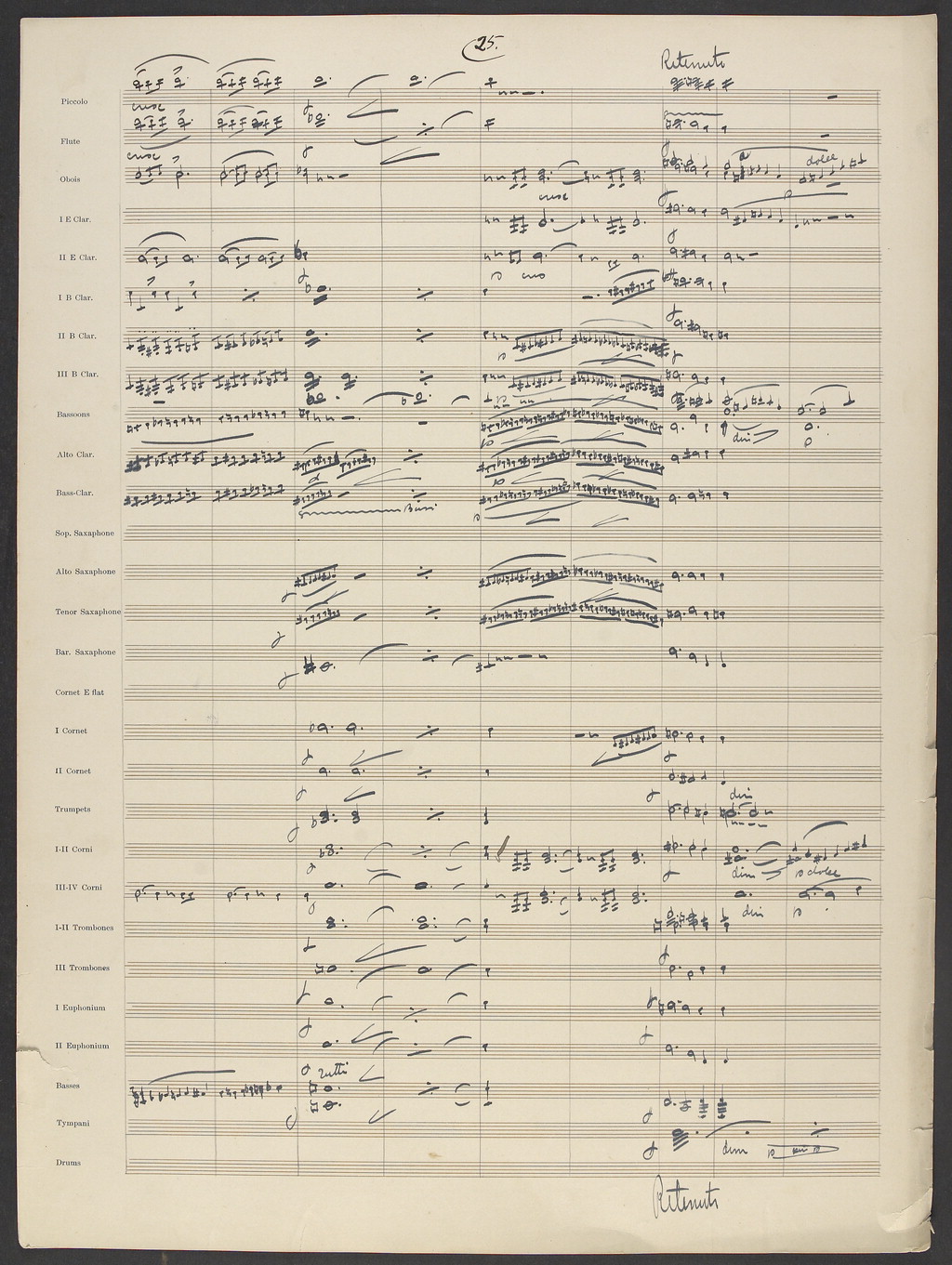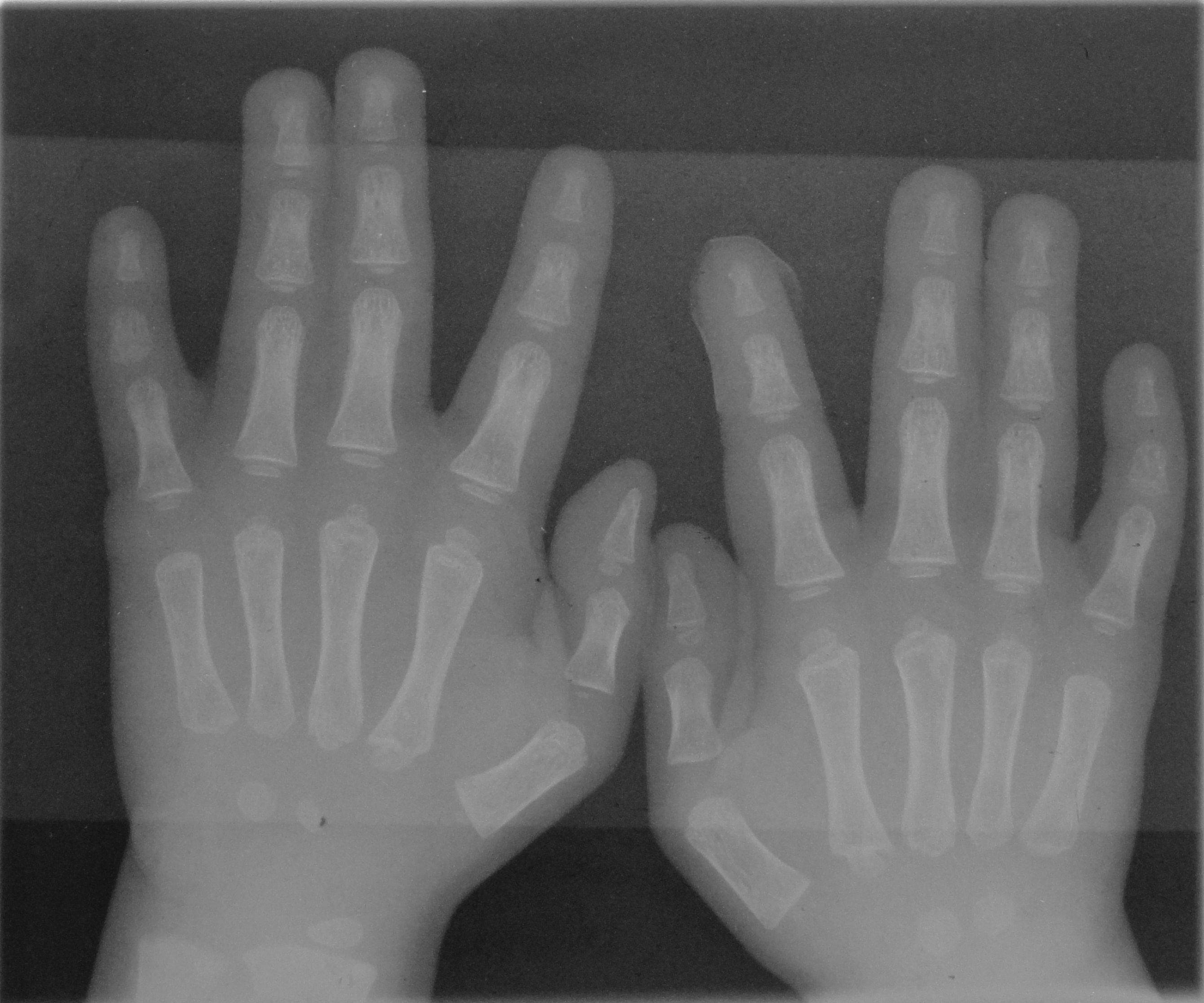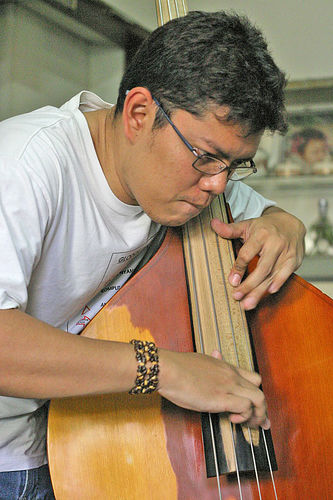|
Fingerstyle Guitarists
Fingerstyle guitar is the technique of playing the guitar or bass guitar by plucking the strings directly with the fingertips, fingernails, or picks attached to fingers, as opposed to flatpicking (plucking individual notes with a single plectrum, commonly called a "pick"). The term "fingerstyle" is something of a misnomer, since it is present in several different genres and styles of music—but mostly, because it involves a completely different technique, not just a "style" of playing, especially for the guitarist's picking/plucking hand. The term is often used synonymously with fingerpicking except in classical guitar circles, although fingerpicking can also refer to a specific tradition of folk, blues and country guitar playing in the US. The terms "fingerstyle" and "fingerpicking" are also applied to similar string instruments such as the banjo. Music arranged for fingerstyle playing can include chords, arpeggios (the notes of a chord played one after the other, as oppose ... [...More Info...] [...Related Items...] OR: [Wikipedia] [Google] [Baidu] |
Steel String Guitar
The steel-string acoustic guitar is a modern form of guitar that descends from the gut-strung Romantic guitar, but is strung with steel strings for a brighter, louder sound. Like the modern classical guitar, it is often referred to simply as an acoustic guitar, or sometimes as a folk guitar. The most common type is often called a flat top guitar, to distinguish it from the more specialized archtop guitar and other variations. The standard tuning for an acoustic guitar is E-A-D-G-B-E (low to high), although many players, particularly fingerpickers, use alternate tunings (scordatura), such as open G (D-G-D-G-B-D), open D (D-A-D-F-A-D), drop D (D-A-D-G-B-E), or D-A-D-G-A-D (particularly in Irish traditional music). Construction Steel-string guitars vary in construction and materials. Different woods and approach to bracing affect the instrument's timbre or tone. While there is little scientific evidence, many players and luthiers believe a well-made guitar's tone imp ... [...More Info...] [...Related Items...] OR: [Wikipedia] [Google] [Baidu] |
Richard Smith (English Guitarist)
Richard Smith (born 12 December 1971) is an English guitarist. Biography Smith was born in Beckenham, England. He picked up the guitar when he was five years old after watching his father playing an Atkins and Travis version of "Down South Blues". He begged his father, a longtime Atkins admirer, to introduce him to the fingerpicking style. Smith soon became a child prodigy on the guitar. As a kid he could play the entire discographies of Django Reinhardt and Chet Atkins. At the age of 11 he shared the stage with his idol when Atkins invited Smith to play with him at Her Majesty's Theatre in London. He was also influenced by guitarist Big Jim Sullivan and briefly studied jazz guitar with Shane Hill at Warlingham School, Surrey. He formed the Richard Smith Guitar Trio with his brothers Rob and Sam before marrying American cellist Julie Adams and moving to Nashville, Tennessee in 1999. He founded the Hot Club of Nashville, a jam band with a varying lineup that included John Jorg ... [...More Info...] [...Related Items...] OR: [Wikipedia] [Google] [Baidu] |
Don Ross (guitarist)
Donald James Ross (born November 19, 1960) is a Canadian fingerstyle guitarist. He was the first person to win the National Fingerstyle Guitar Championship twice (1988 and 1996). His album '' Huron Street'' reached the top ten on the ''Billboard'' New-age chart. Biography Ross was born in Montreal, Quebec to a Scottish immigrant father and a Mi'kmaq mother. He is a member of the Millbrook First Nation. He studied composition at the music department of York University in Toronto with David Mott, James Tenney and Phil Werren. After receiving his Bachelor of Fine Arts in Music in 1983, he studied philosophy at St. Hyacinth College and Seminary in Granby, Massachusetts while living at San Damiano Friary in Holyoke, Massachusetts and then started his novitiate for the Canadian custody of the Conventual Franciscans of Immaculate Conception Province at St. Francis Friary in Staten Island, NY. He decided to leave that pursuit and become a musician. In 1986 Ross produced and published ... [...More Info...] [...Related Items...] OR: [Wikipedia] [Google] [Baidu] |
Doyle Dykes
Doyle Dykes (born May 23, 1954) is an American country acoustic guitarist from Jacksonville, Florida. Cited along with guitarists such as Chet Atkins and Tommy Emmanuel as one of the best fingerstyle guitarists in the world, he is also known for his capability of playing proficiently with a wide range of different guitar tunings. Dykes is influenced by a wide variety of musical styles and musicians, from Chet Atkins, Jerry Reed, and Duane Eddy, to the Beatles and U2. Some of his best-known works and interpretations are "Wabash Cannonball", "Country Fried Pickin'", "U2 Medley", "Be Still", "Amazing Grace" and "While My Guitar Gently Weeps". His most emulated composition is "Jazz in a Box," a prodigy-level instrumental that requires a wide range of musical technique and exceptional skill. Dykes is a devout Christian and has served as a minister in a small church in Florida;Dykes (2011), p.75 the influence of Christianity is present in much of his work. He was a major endorse ... [...More Info...] [...Related Items...] OR: [Wikipedia] [Google] [Baidu] |
Ani DiFranco
Angela Maria "Ani" DiFranco (; born September 23, 1970) is an American-Canadian singer-songwriter. She has released more than 20 albums. DiFranco's music has been classified as folk rock and alternative rock, although it has additional influences from punk rock, punk, funk, hip hop music, hip hop and jazz. She has released all her albums on her own record label, Righteous Babe. DiFranco supports many social and political movements by performing benefit concerts, appearing on benefit albums and speaking at rallies. Through the Righteous Babe Foundation, DiFranco has backed grassroots cultural and political organizations supporting causes including abortion rights and LGBT visibility. She counts American folk singer and songwriter Pete Seeger among her mentors. DiFranco released a memoir, ''No Walls and the Recurring Dream'', on May 7, 2019, via Viking Books and made The New York Times Best Seller list, ''The New York Times'' Best Seller list. On February 9, 2024, DiFranco made ... [...More Info...] [...Related Items...] OR: [Wikipedia] [Google] [Baidu] |
Chord Progression
In a musical composition, a chord progression or harmonic progression (informally chord changes, used as a plural, or simply changes) is a succession of chords. Chord progressions are the foundation of harmony in Western musical tradition from the common practice era of Classical music to the 21st century. Chord progressions are the foundation of popular music styles (e.g., pop music, rock music), traditional music, as well as genres such as blues and jazz. In these genres, chord progressions are the defining feature on which melody and rhythm are built. In tonal music, chord progressions have the function of either establishing or otherwise contradicting a tonality, the technical name for what is commonly understood as the " key" of a song or piece. Chord progressions, such as the extremely common chord progression I-V-vi-IV, are usually expressed by Roman numerals in Classical music theory. In many styles of popular and traditional music, chord progressions are expressed ... [...More Info...] [...Related Items...] OR: [Wikipedia] [Google] [Baidu] |
Accompaniment
Accompaniment is the musical part which provides the rhythmic and/or harmonic support for the melody or main themes of a song or instrumental piece. There are many different styles and types of accompaniment in different genres and styles of music. In homophonic music, the main accompaniment approach used in popular music, a clear vocal melody is supported by subordinate chords. In popular music and traditional music, the accompaniment parts typically provide the "beat" for the music and outline the chord progression of the song or instrumental piece. The accompaniment for a vocal melody or instrumental solo can be played by a single musician playing an instrument such as piano, pipe organ, or guitar. While any instrument can in theory be used as an accompaniment instrument, keyboard and guitar-family instruments tend to be used if there is only a single instrument, as these instruments can play chords and basslines simultaneously (chords and a bassline are easier to play sim ... [...More Info...] [...Related Items...] OR: [Wikipedia] [Google] [Baidu] |
Arrangement
In music, an arrangement is a musical adaptation of an existing composition. Differences from the original composition may include reharmonization, melodic paraphrasing, orchestration, or formal development. Arranging differs from orchestration in that the latter process is limited to the assignment of notes to instruments for performance by an orchestra, concert band, or other musical ensemble. Arranging "involves adding compositional techniques, such as new thematic material for introductions, transitions, or modulations, and endings. Arranging is the art of giving an existing melody musical variety".(Corozine 2002, p. 3) In jazz, a memorized (unwritten) arrangement of a new or pre-existing composition is known as a ''head arrangement''. Classical music Arrangement and transcriptions of classical and serious music go back to the early history of classical music. Eighteenth century J. S. Bach frequently made arrangements of his own and other composers' p ... [...More Info...] [...Related Items...] OR: [Wikipedia] [Google] [Baidu] |
Finger
A finger is a prominent digit (anatomy), digit on the forelimbs of most tetrapod vertebrate animals, especially those with prehensile extremities (i.e. hands) such as humans and other primates. Most tetrapods have five digits (dactyly, pentadactyly),#Cha1998, Chambers 1998 p. 603#OxfIll, Oxford Illustrated pp. 311, 380 and short digits (i.e. significantly shorter than the metacarpal/metatarsals) are typically referred to as toes, while those that are notably elongated are called fingers. In humans, the fingers are flexibly joint, articulated and opposable, serving as an important organ of somatosensory, tactile sensation and fine motor skill, fine movements, which are crucial to the dexterity of the hands and the ability to grasp and object manipulation, manipulate objects. Land vertebrate fingers As terrestrial vertebrates were evolution, evolved from lobe-finned fish, their forelimbs are phylogeny, phylogenetically equivalent to the pectoral fins of fish. Within the taxon, ... [...More Info...] [...Related Items...] OR: [Wikipedia] [Google] [Baidu] |
Pizzicato
Pizzicato (, ; translated as 'pinched', and sometimes roughly as 'plucked') is a playing technique that involves plucking the strings of a string instrument. The exact technique varies somewhat depending on the type of instrument: * On bowed string instruments it is a method of playing by plucking the strings with the fingers, rather than using the bow. This produces a very different sound from bowing, short and percussive rather than sustained. * On keyboard string instruments, such as the piano, pizzicato may be employed (although rarely seen in traditional repertoire, this technique has been normalized in contemporary music, with ample examples by George Crumb, Tōru Takemitsu, Helmut Lachenmann, and others) as one of the variety of techniques involving direct manipulation of the strings known collectively as " string piano". * On the guitar, it is a muted form of plucking, which bears an audible resemblance to pizzicato on a bowed string instrument with its relatively ... [...More Info...] [...Related Items...] OR: [Wikipedia] [Google] [Baidu] |
Attack (music)
In sound and music, an envelope describes how a sound changes over time. For example, a piano key, when struck and held, creates a near-immediate initial sound which gradually decreases in volume to zero. An envelope may relate to elements such as amplitude (volume), frequency (with the use of filters) or pitch. Envelope generators, which allow users to control the different stages of a sound, are common features of synthesizers, samplers, and other electronic musical instruments. The most common envelope generator is controlled with four parameters: attack, decay, sustain and release (ADSR). Envelope generators Development The envelope generator was created by the American engineer Robert Moog, the creator of the Moog synthesizer, in the 1960s. The composer Herbert Deutsch suggested Moog find a way to articulate his synthesizer so notes did not simply trigger on and off. Moog wired a doorbell button to the synthesizer and used a capacitor to store and slowly r ... [...More Info...] [...Related Items...] OR: [Wikipedia] [Google] [Baidu] |


